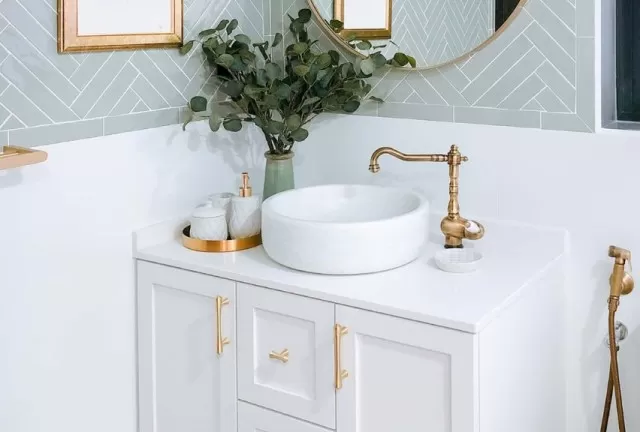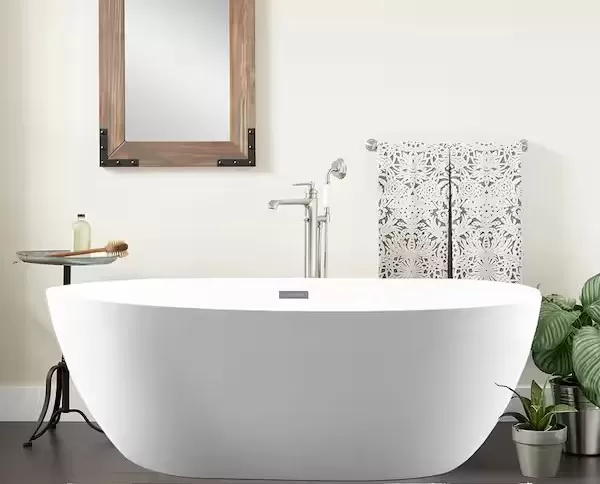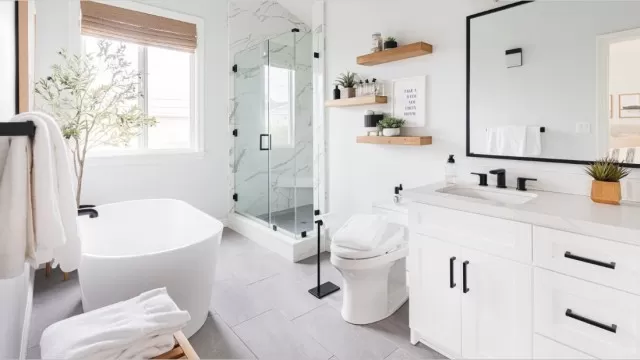Keeping the bathroom clean is essential due to its exposure to various forms of dirt, bacteria, and buildup.
Unlike other areas of the house, the bathroom is prone to accumulating hard-water deposits, mold, mildew, Soap Scum, and bacteria on surfaces such as sinks, toilets, bathtubs, and shower fixtures. Therefore, regular bathroom cleaning is crucial to maintain a hygienic and inviting space.
Typically, it is recommended to perform essential cleaning tasks in the bathroom about once a week.
However, bathrooms that experience higher usage may require more frequent cleaning. For instance, a shared kids’ bathroom tends to get dirty quickly compared to a powder room mainly visited by guests.
Regardless of the frequency, it’s important to incorporate bathroom fixture cleaning into your routine to ensure a sparkling and fresh bathroom environment.
Way to Clean All Items and Surfaces in the Bathroom

When it comes to cleaning the Bathroom Sink, whether it’s a vanity or pedestal sink, it’s essential to keep it clean and shining.
You can use a general-purpose spray cleaner or a mixture of vinegar and water (one cup vinegar to one cup water) to clean the sink. Stubborn grime can be removed by scrubbing with a mildly abrasive cleanser or a paste made from baking soda and water.
Vinegar is effective in eliminating soap scum. Drying the sink with a soft cloth adds a gleaming touch.
To maintain cleanliness, develop the habit of wiping down the basin and surrounding countertop after getting ready or brushing your teeth.

Cleaning the Bathroom Faucet usually requires Dish Soap, water, and a cleaning cloth.
However, it’s important to refer to the manufacturer’s instructions to ensure the recommended cleaning method and tools for the specific faucet material. For some finishes like oil-rubbed bronze or unlacquered brass, water, and a soft cloth are sufficient.
Avoid using stiff-bristled brushes or abrasive sponges on protected finishes like chrome or stainless steel as they may damage the faucet’s surface. For stubborn grime, a solution of vinegar and water (1 cup vinegar to 1 cup water) applied with a cleaning cloth can be effective.
Test vinegar on an inconspicuous area to ensure compatibility with the faucet’s finish. A toothbrush can be used to gently scrub around the edges of the faucet, while a mixture of baking soda and water can help tackle stubborn stains or buildup.

Cleaning a bathtub depends on the material it is made of.
Porcelain or ceramic bathtubs can be cleaned using a general-purpose cleaner, vinegar, and water, or a paste made from baking soda and water. It is important to avoid using undiluted bleach on porcelain tubs as it can damage the surface.
Acrylic and fiberglass tubs are easier to clean and can be maintained with a small amount of dish soap and water. Wiping the surface of the tub with a soft cloth regularly helps in ongoing maintenance, particularly after using bath oils to prevent scum buildup.

Showerheads and faucets require different cleaning methods based on the material.
Lime deposits on showerheads made with chrome, stainless steel, or other protected metal surfaces can be removed by filling a plastic bag with white vinegar, attaching it to the showerhead with a rubber band, and leaving it for an hour. Afterward, remove the bag and flush away the vinegar and sediment by turning on the shower.
Polishing with a soft cloth adds a final touch. For fixtures with oil-rubbed bronze or brass finishes, it is recommended to use only water for cleaning and refer to the manufacturer’s care instructions to avoid any damage to the specialty surface.
Cleaning the toilet involves spraying the exterior with a general-purpose cleaner or a mixture of vinegar and water, and wiping it clean.
The toilet seat can be cleaned using a mild cleaner such as dish soap and water. To sanitize the bowl, scrub it with antibacterial toilet cleaner or a mixture of 1/4 cup bleach to 1 gallon of water.
Wipe off any splashes or drips on the surrounding area with a soft, dry cloth.
By following these guidelines and incorporating regular cleaning into your bathroom routine, you can maintain a clean, hygienic, and inviting bathroom space.
*The information is for reference only.